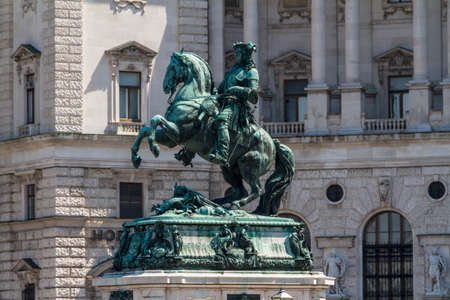Setting the Scene: England on the Eve of Civil War
In order to truly follow the path of the pilgrims and understand the military routes taken during the English Civil War, we must first step back into 17th-century England—a land simmering with tension and uncertainty. By the early 1600s, England was a country in flux, with deeply rooted social divisions and political disputes bubbling just beneath the surface. The monarchy, led by King Charles I, often clashed with Parliament over matters of authority, religion, and finances. Ordinary families felt these pressures in their daily lives as debates over religious practice spilled from cathedrals into village squares and family homes.
Communities across England found themselves divided by loyalty—some supported the Crown, longing for stability and tradition, while others sided with Parliament, yearning for change and greater freedoms. These tensions shaped not only grand political decisions but also everyday conversations around market stalls and hearths. As these disagreements intensified, groups like the Pilgrims—who sought religious freedom far from home—embarked on journeys that would eventually lead them to new worlds. Their motivations were closely tied to the same forces that would soon ignite battles across English fields and towns.
This complex backdrop sets the stage for understanding why so many took up arms or left their homelands altogether. The roads travelled by both pilgrims seeking peace and soldiers marching off to war crisscrossed a nation struggling to define itself. In the following sections, we will explore how these historic routes—threaded through bustling cities, sleepy villages, and open countryside—became central not only to military campaigns but to the story of England itself.
2. Who Were the Pilgrims and What Inspired Their Voyages?
The story of the Pilgrims is deeply woven into Britain’s history, particularly as we trace their journey and its connection to later events like the English Civil War. The Pilgrims, often associated with the group who sailed on the Mayflower in 1620, began as a community of English Separatists. These were devout individuals who sought to break away from the Church of England, desiring religious freedom and a chance to worship in their own way without interference from the state.
The Roots of the Pilgrim Movement
Originating mainly from regions such as Nottinghamshire, Lincolnshire, and Yorkshire, these early dissenters gathered secretly, facing harsh penalties for their beliefs. Their values—freedom of conscience, self-governance, and personal faith—stood in contrast to the established norms of Stuart England.
Beliefs That Sparked Change
| Core Belief | Description |
|---|---|
| Religious Freedom | The right to worship without state control was central to their cause. |
| Community Governance | They valued local decision-making and church independence. |
| Equality Before God | A belief that all members had equal spiritual standing. |
Setting a Precedent for Later Conflicts
The Pilgrims’ determination to pursue liberty set a powerful example across Britain. Their movement foreshadowed growing dissatisfaction with absolute monarchy and state-imposed religion—tensions that would erupt decades later during the English Civil War. Just as the Pilgrims charted new courses for freedom, so too did Parliamentarians and Royalists travel military routes across England, fighting over issues of governance and rights. In this way, the journey of the Pilgrims became not just a transatlantic adventure but also a symbol for future generations seeking justice and autonomy on British soil.

3. Mapping the Military Routes: Key Battlegrounds and Their Significance
Exploring the military routes of the English Civil War offers families a fascinating way to uncover England’s past while experiencing the country’s beautiful countryside and vibrant towns. Many of the main trails taken by Royalist and Parliamentarian forces can still be traced today, connecting well-known cities and charming rural villages that played pivotal roles in the conflict.
Oxford to London: The Royalist Heartland
The Royalists, loyal to King Charles I, made Oxford their headquarters during much of the war. The route from Oxford to London is dotted with historic stops such as Wheatley, Thame, and Stokenchurch. Today, families can enjoy gentle walks or cycle rides along these paths, stopping at local bakeries or pubs for refreshments. This trail brings history to life, showing how armies moved between strongholds and highlighting Oxford’s enduring significance as an academic and cultural centre.
Edgehill: The First Major Clash
One of the most notable battlegrounds is Edgehill in Warwickshire—the site of the first major battle in 1642. Walking trails around Edgehill lead visitors through rolling fields where families can imagine the clash of pikes and cavalry charges. Nearby, Kineton village offers a welcoming stop for snacks or a picnic, blending historical reflection with a taste of rural England.
Naseby: Turning Point in Northamptonshire
The Battle of Naseby marked a turning point for Parliamentarian forces. Modern visitors can follow clearly signposted routes around Naseby village, taking in panoramic views over open countryside. Informative boards along the way help all ages understand the tactics used and why this area was so strategically important. Don’t miss nearby Market Harborough—a friendly town perfect for family lunches after your historical walk.
The South-Western Campaigns: From Bristol to Exeter
The West Country saw intense fighting as both sides sought control of key ports like Bristol, Bath, and Exeter. Today, the journey between these cities follows scenic routes through Somerset and Devon, passing by ancient castles and market towns like Taunton and Tiverton. Families can explore castle ruins together or stroll along riverside paths that once echoed with soldiers’ footsteps.
Modern Landmarks Along Historic Trails
Many Civil War sites are now part of thriving communities or protected countryside. Whether you’re exploring Salisbury Plain near Devizes or enjoying a family day out at Newbury Racecourse—once a battlefield—you’ll find plenty of ways to combine learning with leisure. These journeys not only link us to our shared history but also showcase England’s rich diversity—from bustling city squares to tranquil green spaces.
Family Tips for Exploring Civil War Routes
Plan ahead for plenty of breaks at local cafés or parks, and look out for museums offering interactive exhibits for younger explorers. With each step along these historic routes, families can share stories, discover hidden gems, and create memories that bring England’s dramatic past vividly to life.
4. Life on the Move: Stories of Soldiers and Civilians
The military routes of the English Civil War were more than just strategic highways for armies—they were lifelines for communities, families, and those swept up in the tides of conflict. Daily life along these paths was a patchwork of routine, hardship, resilience, and small joys, woven together by the footsteps of soldiers and the steady presence of local folk. Let’s step into their shoes with some relatable stories and snippets drawn from local folklore and personal diaries.
Everyday Experiences on the Road
Marching soldiers faced long days, unpredictable weather, and scant supplies. Local families living along these routes often found their lives upended as troops passed through—sometimes welcomed as protectors, sometimes feared as burdens. The following table paints a picture of what daily life might have looked like for different people:
| Group | Common Experiences | Snippets from Diaries & Folklore |
|---|---|---|
| Soldiers | Muddy boots, rationed bread, camaraderie around campfires, worry about home | “The roads were thick with clay; boots near lost in muck” (Private John B., 1644) |
| Civilians (Families) | Baking extra loaves for passing regiments, hiding valuables, tending wounded neighbours | “Mother sent us to gather eggs before the men arrived. She said ‘keep your heads low and your hearts strong’” (Mary H., village girl) |
| Children | Curious glances at uniforms, helping with chores, learning news from faraway towns | Local saying: “When the drum beats thrice, lock your doors and mind your geese.” |
The Role of Folklore and Community Spirit
Folklore abounds along these old military routes. In some villages, tales are still told of “The Midnight March,” where spectral soldiers are said to retrace their wartime journey every midsummer’s eve—a story shared to encourage children home before dark. Such legends served not only to entertain but also to help communities make sense of uncertain times.
Voices from History: Diary Snippets
- From a Parliamentarian soldier: “A loaf shared is a day survived.”
- From a farmer’s wife near Edgehill: “We counted our hens each morning after troops moved through—thankful for every cluck.”
- A young boy’s account: “Father gave an apple to a tired Redcoat. He winked at me and said, ‘Wars end, but kindness remembers.’”
Keeping Family Traditions Alive Amidst Change
Despite uncertainty, families clung to familiar routines: Sunday roasts when possible, singing old songs by candlelight, telling tales that reminded them of better days. These small acts helped maintain hope and unity—even as the world outside their doors shifted with each passing regiment.
5. Tracing the Path Today: Exploring Historic Routes as a Family
Walking in the footsteps of Civil War pilgrims isn’t just for history buffs—it’s a fantastic way for families to connect with the past while making new memories together. Across England, many of the military routes and battlefields from the English Civil War are now accessible through well-marked trails, heritage walks, and interactive visitor centres. These outings are not only educational but also offer plenty of fresh air and opportunities for adventure, whatever your children’s ages or interests.
Planning Your Family Outing
Start by choosing a route that matches your family’s abilities and interests. Some sites, like Edgehill or Naseby, have gentle paths suitable for prams and little legs, while others may appeal more to keen walkers or older children ready for a longer trek. Many routes feature information boards, audio guides, or downloadable apps that bring stories of battles and brave individuals to life—perfect for sparking young imaginations.
Must-Visit Sites Along the Pilgrims’ Path
Consider visiting key locations such as Worcester, where the final battle took place, or Newbury with its atmospheric fields and historic churches. Oxford, once King Charles I’s headquarters, offers family-friendly museums packed with Civil War artefacts. For those near London, St Albans boasts beautiful parks and easy access to major rail links.
Top Tips for an Enjoyable Experience
- Pack a picnic filled with British favourites—think cheese sandwiches, sausage rolls, and perhaps a thermos of tea.
- Wear comfy shoes and bring waterproofs just in case—British weather can be unpredictable!
- Encourage children to keep a journal or sketchbook to record what they see; this helps them engage with the history around them.
- Check ahead for family events or reenactments; many sites host living history days with costumed guides and activities.
By tracing these historic routes together, you’ll not only deepen your appreciation for England’s rich past but also enjoy quality time outdoors as a family. Whether it’s a gentle stroll or a day-long ramble, these walks offer the perfect blend of learning, exercise, and fun—truly bringing history to life for all generations.
6. The Lasting Legacy: How the Pilgrim and Civil War Routes Shaped Modern Britain
The ancient pathways trodden by pilgrims and soldiers during the English Civil War have left a profound mark on the landscape, but their true legacy extends far beyond footpaths and signposts. Today, these routes are woven into the very fabric of British identity, influencing how communities understand freedom, civil liberty, and the spirit of pilgrimage.
Forging a Sense of National Identity
The journeys of both pilgrims seeking spiritual fulfilment and armies marching for political change have contributed to Britain’s distinctive sense of self. Walking these historic routes today, whether as a family outing or a personal journey, offers a tangible connection to the struggles and hopes of those who came before us. They remind us that British identity is built on resilience, diversity of thought, and the courage to stand up for one’s beliefs—values shaped on muddy tracks and battlefield fields alike.
The Enduring Spirit of Pilgrimage
Pilgrimage in modern Britain is no longer solely a religious pursuit; it has grown into a celebration of heritage, community, and personal growth. From schoolchildren learning about local history to families enjoying countryside rambles along former military roads, these routes invite people of all backgrounds to reflect on shared values like freedom of movement and respect for differing viewpoints. In this way, pilgrimage continues to foster unity amidst diversity—an ethos at the heart of modern Britain.
Civil Liberty: Lessons from History
The Civil War routes especially serve as living reminders of hard-won liberties. The debates over monarchy, parliament, and individual rights that once divided the nation now underpin cherished democratic traditions. Exploring these paths encourages thoughtful discussion about what it means to be free—and how fragile those freedoms can be if taken for granted.
Modern Connections: Walking Together Toward the Future
Today’s walkers not only trace the footsteps of history but also forge new memories with loved ones along these ancient ways. Community events, guided walks, and local storytelling breathe life into these paths each year. By engaging with this living heritage, modern Britons—young and old—continue to shape their relationship with pilgrimage, freedom, and civil liberty in meaningful ways.
In sum, following the path of the pilgrims and Civil War soldiers is more than a journey through beautiful countryside—it’s an invitation to reflect on Britain’s past and contribute to its future. These routes are lasting testaments to the enduring power of hope, belief, and the quest for a better tomorrow.


